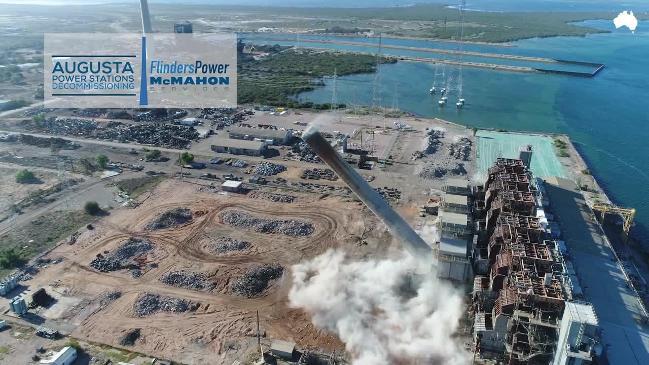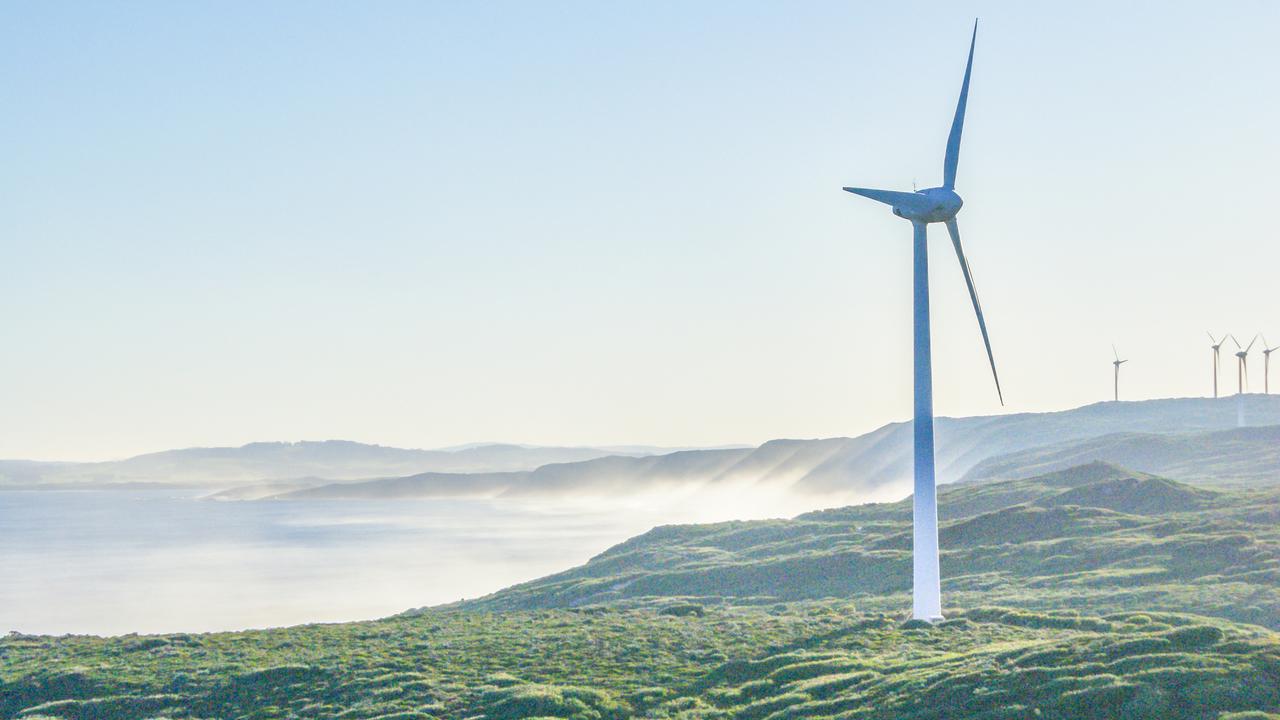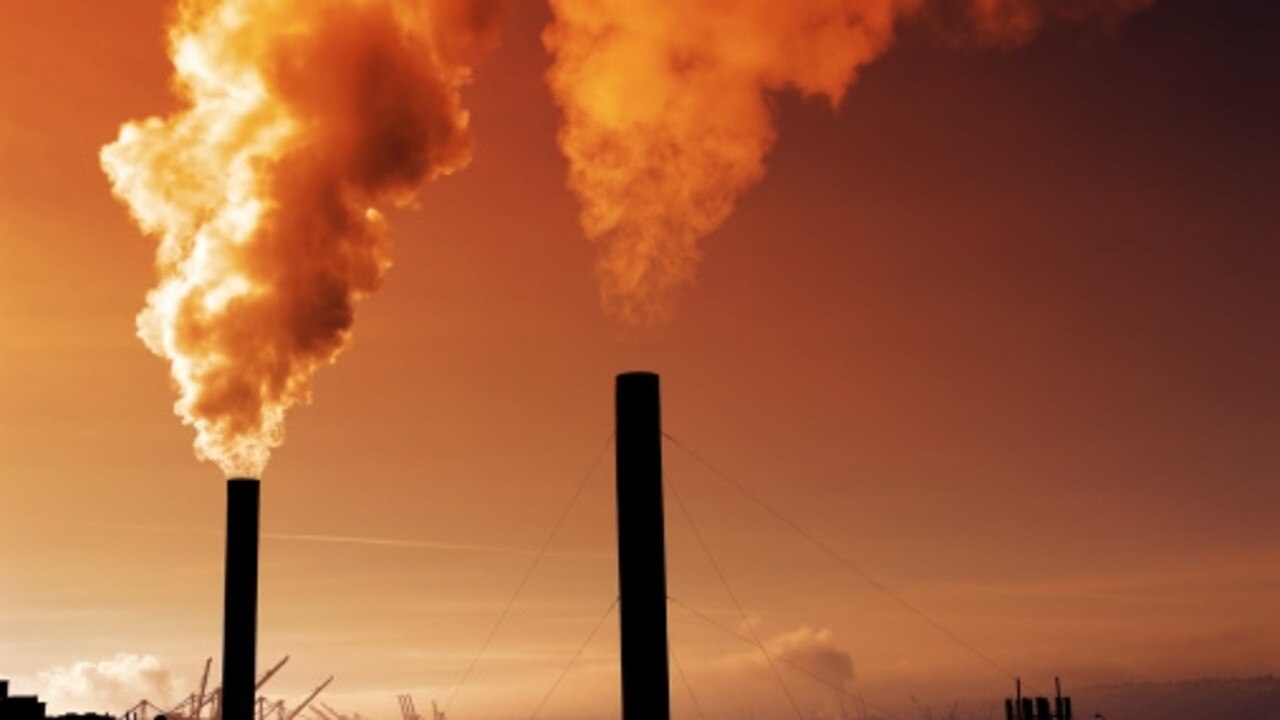Last South Australian coal-fired power station demolition nears completion
The destruction of South Australia’s last coal-fired power station is almost complete after an 80-metre high chimney stack came crashing down this morning | WATCH

The destruction of infrastructure at South Australia’s last coal-fired power station is almost complete after an 80-metre high chimney stack came crashing down this morning in a controlled explosion.
The concrete and brick structure at the 240MW Playford B power station, named after long-serving South Australian premier Sir Thomas Playford and mothballed in 2012, leaves only the 200-metre high stack at the nearby Northern power station standing in Port Augusta, 280km north of Adelaide.
That is expected to be demolished in April or May as part of a decommissioning process undertaken by Flinders Power, an offshoot of former power station operator Alinta Energy.
Specialist explosive charges were used this morning to weaken the base of the Playford B chimney stack, enabling a controlled fall, the company says.
“There were no dust or weather-related issues during this morning’s operation,” a Flinders Power spokesman said.
Other key parts of the Northern Power Station, including the turbine generator, were demolished last year.
Before announcing the closure of Northern in mid-2015, Alinta unsuccessfully sought $25 million in subsidies over three years from the South Australian Labor government to keep it operating until this year, to ensure an effective transition occurred, after a rapid rise in renewable energy made it unviable.
However, the Weatherill government, which is ideologically opposed to coal, rejected the offer.
The power plant closed in May 2016, resulting in the loss of 185 jobs, significant spikes in power prices, and a lack of energy security in South Australia.
The Leigh Creek coal mine, 260km north of Port Augusta, that fuelled the power stations closed in November 2015, resulting in the loss of more than 200 jobs.
Locals in Port Augusta this week expressed frustration at the state government’s failure to have an effective transition plan in place before the closure of the power plant.
Deirdre McKerlie, who works at KD’s Hair Flair, told The Australian that not having a transition plan was “just stupid”. She said Port Augusta hit “rock bottom”, with many businesses unviable and residents moving away.
“It’s taken a long time, but there’s been a bit of a turnaround in the last few months,” she said.
Local Liberal MP and opposition energy spokesman Dan van Holst Pellekaan said the community “overwhelmingly” supported renewable energy, but remained “pissed off” that Alinta’s offer was ignored “purely for political purposes”.
“The people are still furious the government forced the power station to close before a plan was in place,” he said.
Premier Jay Weatherill this week visited Port Augusta to open the office of SolarReserve, a US company that won a state government tender to build a $650m solar thermal plant.
The Premier was also at the site of the proposed Lincoln Gap wind farm on the outskirts of Port Augusta, and visited a solar farm near Whyalla.
“Port Augusta is a symbol of South Australia’s transition from old to new,” Mr Weatherill said.
“We’ve seen the closure of the old coal-fired power station and now we’re seeing a world-leading solar thermal plant delivering clean, affordable and reliable power.”
Sir Thomas established South Australia’s coal-fired power industry in the years following WWII so the state could be self-sufficient, after earlier relying on coal from NSW.
Playford B was commissioned in 1963 and Northern in 1985.




